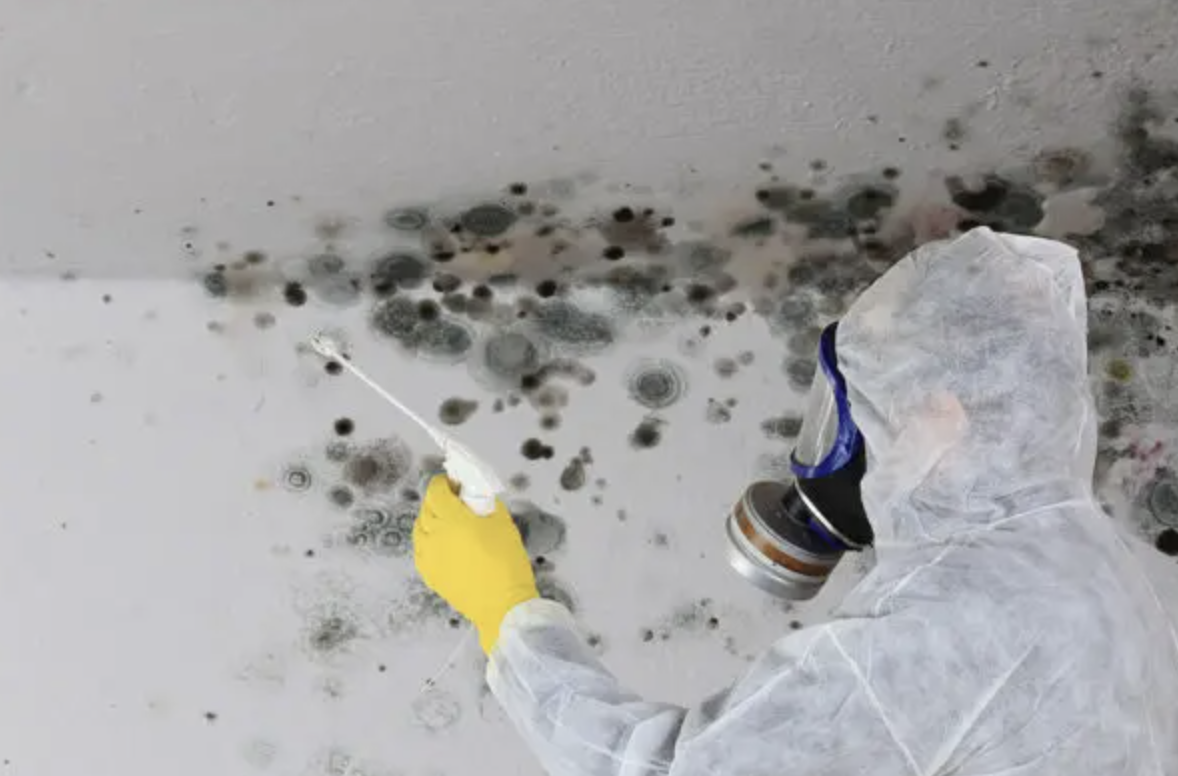Article by Joshua Kent
Moisture Master Pros Owner
Have you ever entered a room and immediately caught a whiff of something funky? It’s not just a foul odor; it may be a sign of mold growth in your home. Mold is a serious problem that can cause a variety of health issues and extensive damage to your home. The worst part is that it’s often difficult to detect until it’s too late. But worry not; we’ve got you covered! We’ll shed light on the mystery of mold odors and provide answers to the common question, “What does mold smell like?” as well as information you need to keep your home free of mold.
Excess moisture in the home is often the culprit behind mold growth, which makes it a prevalent issue in many households. If left untreated, it can lead to serious health problems, including respiratory issues, allergies, and other health conditions. Not only that, but mold can also cause structural damage to your home, which can be a nightmare to repair. However, by recognizing the signs of mold growth and taking proactive measures, you can keep your home mold-free and safeguard the health and well-being of your loved ones. So, let’s delve into the world of mold odors and discover everything you need to know to maintain a mold-free home. Mold odor is a musty, earthy, and unpleasant smell that can indicate the presence of mold. In this blog post, we will explore what mold smells like, where it grows, the health effects of exposure, and how to prevent and deal with mold infestations.
Understanding Mold Odors: Why You Should be Concerned
Mold smells can be a clear indication that mold is present in your home, silently damaging your property and putting your health at risk. Excess moisture in the house is often the culprit behind mold growth, which makes it a prevalent issue in many households. If left untreated, it can lead to serious health problems, including respiratory issues, allergies, and other health conditions, especially in those with compromised immune systems.
Not only that, but mold can cause extensive structural damage to your home, particularly if it’s left untreated for an extended period. This can be a nightmare to repair.
When mold grows on a damp surface, it feeds on the material it’s growing on, such as wood, drywall, or carpet. As a result, it can weaken the material’s structure, potentially leading to the sagging or crumbling of ceilings, walls, and floors. The damage can be so severe that it may require costly repairs, such as replacing entire sections of drywall or flooring. The worst part is that it can spread to other areas of your home, causing further damage and requiring even more expensive repairs. Mold can cause discoloration and staining of walls, floors, and ceilings, making your home look unattractive and lowering its value.
But the good news is that the mold can be removed, and you can prevent it from returning. Regularly inspecting your home for signs of mold growth, such as discoloration or a musty odor, is an essential part of keeping your home healthy and safe. So, don’t let the unpleasant smell of mold linger in your home. Take action and schedule a mold inspection at the first sign of a musty mold smell and ensure that your home is a safe and healthy environment for you and your loved ones.
Call Moisture Master Pros for Your Mold Issues!
Our team of experts uses state-of-the-art technology and techniques to quickly and effectively eliminate mold from your property.
Click Here to Contact Us Today!The Scent of Mold: How to Identify Its Distinctive Smell

The best way to identify any unpleasant odors, specifically mold odor, is to understand better what exactly mold smells like. Mold has a distinct smell, an unpleasant odor that can be described as a musty smell, rotting leaves, earthy smell, or a combination of these three scents. It is often compared to the smell of wet leaves or dirt. The odor can be especially strong in areas where there is a lot of moisture, such as walls and ceilings.
Mold odor is caused by the microbial volatile organic compounds (MVOCs) that are released by mold as it grows. The musty odors are often caused by the breakdown of organic matter, such as wood, paper, or textiles. The damp odors are caused by the moisture that mold requires to grow. The earthy odors are caused by the presence of soil or other organic matter in the environment.
The Most Common Places You’ll Find Mold Growing
Mold is a sneaky culprit that can grow just about anywhere in your home, but some areas are more prone to mold growth than others. By knowing where mold is most likely to grow, you can take proactive measures to prevent it from occurring and keep your home healthy and safe. The most common places to find mold growth are in bathrooms, kitchens, and basements. These areas tend to have high humidity levels and are prone to moisture, making them a perfect breeding ground for mold.
Black mold, also known as Stachybotrys chartarum, is one of the most dangerous types of toxic mold, and it can cause serious health problems. Black mold often grows in areas that are damp and humid, such as basements, bathrooms, and kitchens. It’s also common in areas that have experienced water damage, such as after a flood or a leak. The Black mold smell is distinct and typically has a musty, earthy odor. Black mold spores can cause a variety of health issues, including respiratory problems, allergic reactions, and other health conditions.
If you suspect that you have black mold in your home, it’s essential to have it professionally removed as soon as possible to prevent health problems and structural damage to your home. By knowing where mold, especially black mold, is most likely to grow, you can take proactive measures to prevent it from occurring and keep your home safe and healthy.
Health Effects of Mold Exposure: What You Need to Know

Mold growth in your home can cause a variety of health problems, particularly if it’s left untreated for an extended period. The severity of the health effects depends on the type of mold and the individual’s sensitivity to it. Some people are more sensitive to mold than others and may experience more severe symptoms. Mold exposure can cause a range of health problems, including respiratory issues, allergies, skin irritation, and other health conditions. It’s essential to recognize the symptoms of mold exposure and address the problem immediately to prevent further health problems.
If you suspect that there is mold in your home, it’s important to address the problem as soon as possible to avoid health issues. You can reduce your risk of exposure to mold by wearing a mask and gloves when cleaning or removing mold and by ensuring that your home is well-ventilated. It’s also important to have your home inspected regularly for mold growth, especially if you live in a high-humidity area or have experienced water damage.
5 Tips for Preventing and Dealing with Mold Infestations
Preventing mold growth is the best way to avoid the health problems and structural damage it can cause. It’s crucial to take proactive measures to prevent mold growth and address it as soon as it appears. Here are some tips to help prevent and deal with mold infestations:
Keep your home dry and well-ventilated
Mold thrives in moist environments, so it’s essential to keep your home dry and well-ventilated. Use dehumidifiers, air conditioners, and fans to keep the air circulating and reduce the humidity level in your home.
Repair leaks promptly
Any leaks in your home, whether it’s a leaky faucet or a damaged roof, can create a perfect environment for mold growth. Therefore, it’s essential to repair any leaks promptly to prevent mold growth.
Clean up spills and floods immediately
Any spills or floods in your home should be cleaned up immediately to prevent the growth of mold. Use a wet/dry vacuum to remove standing water and clean and dry any affected surfaces thoroughly.
Use mold-resistant products
When renovating or building your home, use mold-resistant products, such as mold-resistant drywall and paint, to reduce the risk of mold growth.
Inspect your home regularly
Regularly inspect your home for signs of mold growth, such as discoloration or a musty odor. If you detect mold growth, address the problem immediately to prevent further damage and health problems.
DIY vs. Professional Mold Remediation: Which Option is Best?
If you’ve discovered mold growth in your home, you may be wondering whether to take on the task of mold remediation yourself or hire a professional. Here are the positives of both DIY and professional mold remediation:
DIY mold remediation may be a cost-effective solution, particularly for small mold growth. By using DIY products and following proper safety protocols, mold removal for a small amount of growth can be done without needing professional help. Another benefit of DIY mold remediation is that it allows you to be in control of the process and ensure that the job is done to your satisfaction. Plus, you can save money on professional fees and use that money to invest in mold-resistant products to prevent future mold growth.

Professional mold inspection and remediation, on the other hand, offers a range of benefits that DIY mold remediation can’t match. Professionals have the knowledge and experience to identify the type and extent of mold growth and develop a customized plan to remove it safely and effectively. They also have access to specialized equipment and products that may not be available to the average homeowner, making the process more efficient and effective. Moreover, professional mold remediation can help prevent future mold growth by identifying and addressing the root cause of the problem. By hiring a professional, you can rest assured that the job is done safely and thoroughly without the risk of future mold growth.
Ultimately, the decision to go with DIY or professional mold inspection and remediation depends on the extent and severity of the mold growth. For small mold growth, DIY mold remediation can be a cost-effective and satisfactory solution. However, for larger and more severe mold growth, professional mold remediation is the safest and most effective option. It’s important to weigh the pros and cons of each option and make an informed decision based on the size and scope of the mold growth in your home.
Staying Safe and Mold-Free in Your Home
Mold growth in your home not only causes an unpleasant smell but also poses serious health risks and extensive damage to your home. Staying safe and mold-free in your home requires vigilance, regular inspections, and proactive measures. By recognizing the signs of mold growth and taking proactive measures to prevent it, you can stay one step ahead of mold growth and keep your home safe and healthy.
Call Moisture Master Pros for Your Mold Issues!
Our team of experts uses state-of-the-art technology and techniques to quickly and effectively eliminate mold from your property.
Click Here to Contact Us Today!


